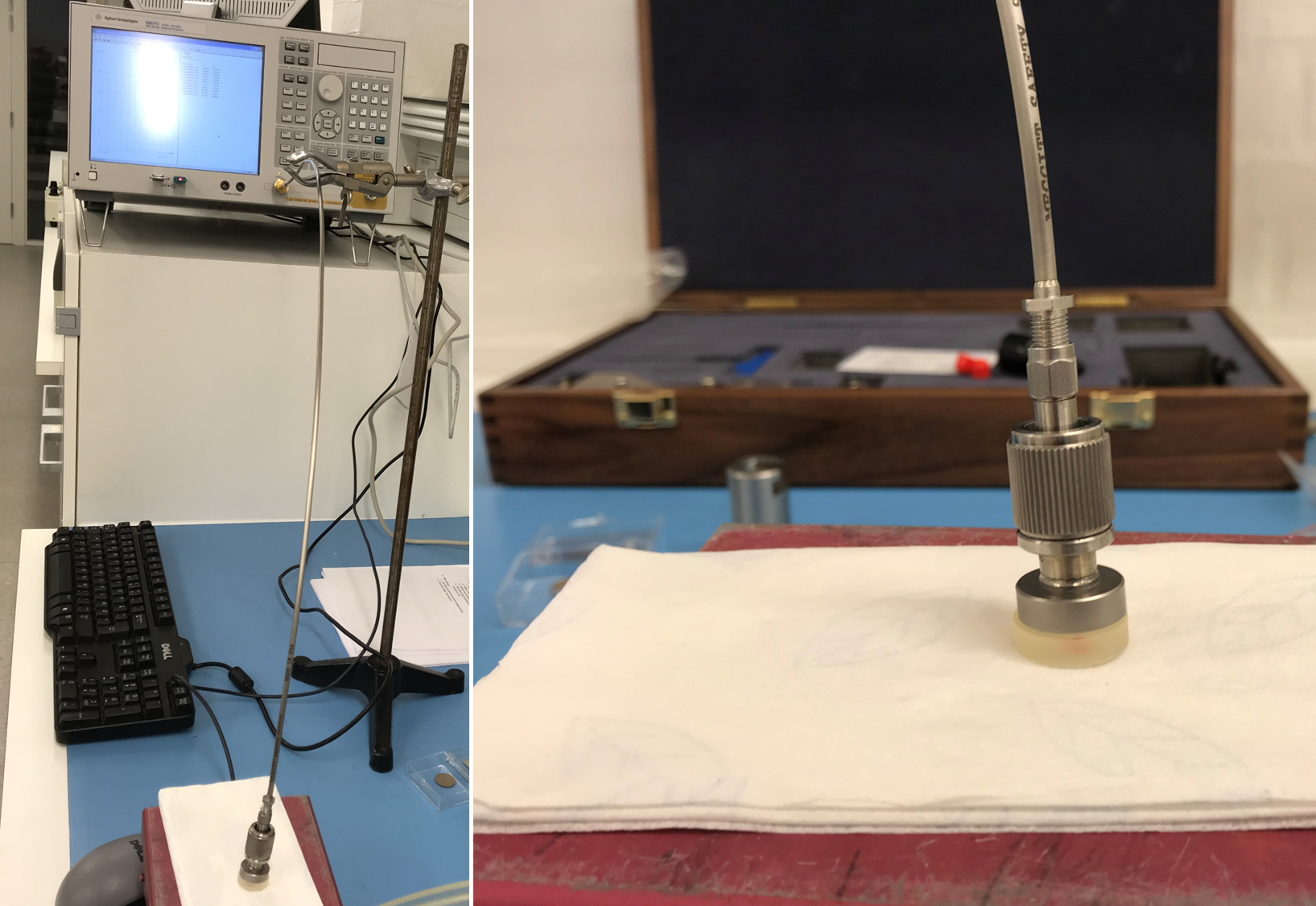Measurements of the dielectric properties of materials in the microwave range of frequencies
The overwhelming majority of foodstuff and packaging materials (e.g., plastics, glass, and paper) are lossy dielectric media, which means that their interaction with microwaves is controlled by two parameters – the permittivity or dielectric constant (as it is commonly termed in the USA) and the dielectric loss factor.
These values are relative to the values of free space. Their combinations yield two other parameters, which are frequently used for characterization of interaction of electromagnetic waves (and particularly microwaves) with materials: the dielectric loss tangent and the penetration depth. These parameters are both depend on the microwave frequency, the temperature of the material under test (MUT) and humidity of the air.
Values of dielectric parameters of materials play a critical role in determining their interaction with the microwave electric field. Their measuring is therefore an essential step in development of packaging and products for use in the microwave ovens, characterization and validation of RFID tags, as well as tagged packaging and packaged goods.
The methods for measurements of dielectric parameters are regulated by following standard: ASTM-D2520-86(1990); ASTM-D-2520-86(1990); ASTM-D2520-86; ASTM-D-2520-86 “Standard Test Methods for Complex Permittivity (Dielectric Constant) of Solid Electrical Insulating Materials at Microwave Frequencies and Temperatures to 1650 degree C”, American Society for Testing and Materials. Philadelphia Publication West Conshohocken, PA: ASTM, 1990. In: Annual book of ASTM standards.
Danish Technological Institute uses open-ended probe technique for characterization of the dielectric properties of foodstuff and other matters (liquids, gels, soft and solid materials) in the broad range of microwave frequencies from 200 MHz (0.2 GHz) to 8500 MHz (8.5 GHz). This range covers following frequency bands according to standard IEEE 521-2002 “IEEE Standard Letter Designations for Radar-Frequency Bands”: Ultra High Frequency (UHF, 0.3 to 1 GHz), Long wave (L, 1 to 2 GHz), Short wave (S, 2 to 4 GHz), and Compromise band (C, 4 to 8 GHz). What is more, this range covers microwave frequencies officially allocated for industrial, scientific, and medical (ISM) use: The frequency of 2.45 GHz from the S-band is the most used for domestic microwave ovens but also applied for industrial precooking, pasteurization and sterilization of packaged food. The 915-MHz line from the UHF-band finds its numerous industrial applications for precooking, pasteurization, sterilization of packaged food and tempering of frozen products. The frequency of 5.8 GHz has not so far been widely used for food processing applications even though it exhibits very useful properties for surface decontamination. Particularly, 5.8-GHz microwaves have smaller penetration depth and higher absorption power as compared with those for 2.45 GHz.
The open-ended probe technique calculates the dielectric parameters from the phase and amplitude of the reflected signal at the end of an open-ended coaxial line inserted into an MUT sample as shown in the pictures. We use the open-ended probe system that comprises a high temperature probe 85070A with a flat flange, a high-temperature secured connection cable (both are parts of the 85070E Dielectric Probe Kit), and a vector ENA network analyzer E5071C (Agilent Technologies). The measurements are carried out either in controlled temperature and humidity laboratory conditions (23°C, 50% RH) or in one of our climate chambers, which enables temperature sweep from –70°C to +180°C and humidity from 10% to 95% (in the temperature range of +2 °C to +80°C).
 DTI’s open-ended probe system for measuring dielectric properties of materials. The open-ended probe 85070A placed onto sample for characterisation of the dielectric properties.
DTI’s open-ended probe system for measuring dielectric properties of materials. The open-ended probe 85070A placed onto sample for characterisation of the dielectric properties.